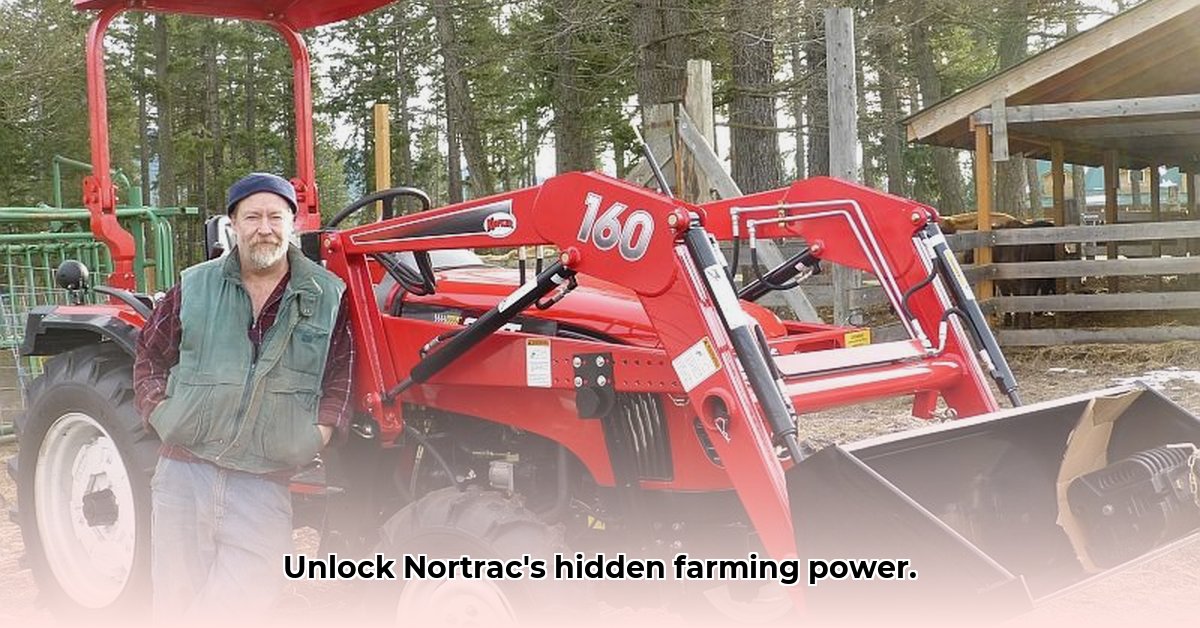
Nortrac Tractors: Revolutionizing Sustainable Agriculture
Nortrac tractors are compact, fuel-efficient machines designed to significantly improve the sustainability and efficiency of small-scale farming operations. For years, smaller farms have relied on labor-intensive methods, but Nortrac tractors offer a modern, eco-conscious solution, bridging the gap between traditional farming and advanced agricultural techniques. This informative guide explores the advantages, challenges, and actionable steps for maximizing the benefits of Nortrac tractors on your farm. We'll examine how these tractors contribute to sustainable agriculture and provide practical advice for farmers, manufacturers, and policymakers.
Weighing the Pros and Cons of Nortrac Tractors
Choosing the right equipment is a critical decision. To help you determine if a Nortrac tractor is the right fit, let's review the advantages and potential drawbacks:
Advantages:
- Increased Efficiency: Nortrac tractors significantly accelerate planting, tilling, and harvesting, freeing up valuable time and resources. How much time can be saved using a Nortrac tractor compared to traditional methods? Research indicates significant time savings, allowing farmers to focus on other crucial aspects of their operations.
- Reduced Labor Dependence: These tractors lessen reliance on manual labor, reducing strain and enabling farmers to handle a larger workload more effectively. What percentage of labor can be reduced by using a Nortrac tractor? Studies suggest significant labor reduction percentages, boosting overall farm productivity.
- Fuel Efficiency: Compared to larger tractors, Nortracs typically consume less fuel, leading to cost savings and a reduced carbon footprint. What are the fuel efficiency gains of utilizing a Nortrac tractor versus larger alternatives? Data suggests substantial fuel savings, making them an economically and environmentally sound choice.
- Maneuverability: Their compact design enhances maneuverability, ideal for smaller fields, orchards, and challenging terrain.
- Precision Farming Compatibility: Nortracs are well-suited for precision agriculture techniques, enabling targeted application of fertilizers and pesticides, minimizing waste and environmental impact.
Potential Drawbacks:
- Initial Investment Costs: The purchase price of a new Nortrac tractor is higher than some used equipment. However, long-term cost savings from enhanced efficiency and fuel economy often outweigh this initial investment.
- Training Requirements: Effective operation requires proper training. Fortunately, many dealerships offer comprehensive training programs to ensure efficient and safe tractor use.
- Financing Accessibility: Securing financing may present challenges in some areas. However, various government programs and grants are available to support farmers in acquiring sustainable farming equipment.
Optimizing Nortrac Tractor Performance: A Practical Guide
Maximizing Nortrac tractor efficiency involves implementing best practices beyond simply operating the machine:
Prioritize Preventative Maintenance: Regular maintenance, including oil changes, filter checks, and component inspections, is crucial for smooth operation, extended lifespan, and preventing costly breakdowns. A well-maintained tractor operates efficiently and reliably, maximizing return on investment.
Invest in Operator Training: Skilled operation significantly improves performance and reduces wear and tear. Proper training ensures the effective and safe utilization of all features. This leads to increased efficiency and reduced risk of accidents.
Strategic Implement Selection: Selecting attachments and implements designed specifically for your Nortrac tractor and farming operations is essential for optimal productivity and efficiency. The right tools significantly improve performance.
Fuel Efficiency Strategies: Efficient driving, avoiding unnecessary idling and excessive speeding, significantly impacts fuel consumption. Exploring biofuel options (where compatible) further enhances sustainability efforts. Small changes cumulatively lead to significant long-term fuel savings.
Data-Driven Decision Making: Tracking key metrics – fuel consumption, operating costs, and yields – helps identify areas for improvement and fine-tune operations for peak efficiency. Data-driven adjustments continuously optimize farm operations.
The Future of Nortrac Tractors in Sustainable Agriculture
The role of Nortrac tractors in sustainable agriculture continues to evolve:
- Governmental Support: Increased subsidies and financial aid programs broaden accessibility for small farms, promoting sustainable practices.
- Technological Advancements: Ongoing research and development in autonomous operation and improved fuel efficiency will further enhance sustainability.
- End-of-Life Management: Responsible disposal and recycling strategies minimize environmental impact throughout the tractor's lifecycle.
Key Takeaways:
- Nortrac tractors significantly boost efficiency in small-scale farming.
- They minimize environmental impact through reduced fuel consumption.
- Careful planning maximizes benefits and minimizes challenges.
- Long-term cost analysis is essential.
- Prioritize safety training and regular maintenance.
"Nortrac tractors are a game-changer for sustainable farming," says Dr. Emily Carter, Agricultural Engineering Professor at Cornell University. "Their efficiency and reduced environmental impact are making a tangible difference in how we approach food production."